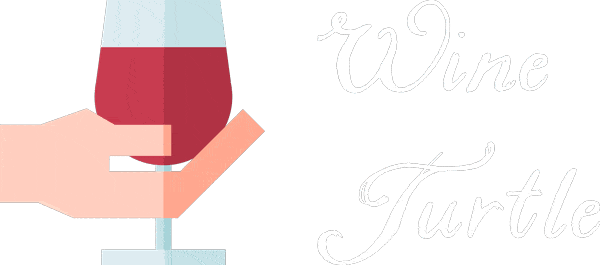Sparkling Wine vs Champagne: How to Tell the Difference
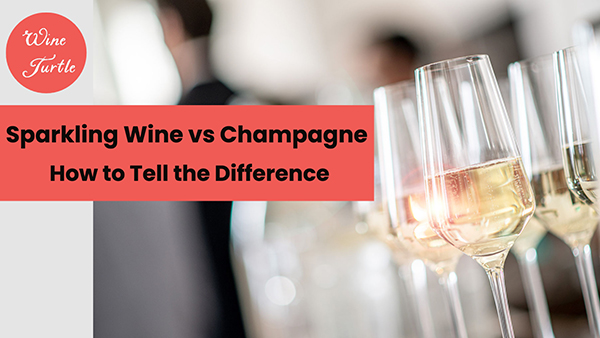
Pop the cork and let the bubbles flow! But wait, is it Champagne or is it wine?
For the uninitiated, the distinction can be as subtle as the bubbles themselves.
In this effervescent article, I’ll uncork the secrets behind the illustrious Champagne and explore how it dances in its own league compared to other wines. So, grab your wine flute and let’s start our sparkling journey!
Sparkling Wine and Champagne
Champagne is just one of many sparkling wines. A sparkling wine is one with effervescence or bubbles that produce a fizz and there are many varieties from all over the winemaking world.
I'll go into the big differences between Champagne compared to wine later but right now let's define each popular sparkling wine that I'll mention over the course of this article.
Prosecco DOC
Prosecco is an Italian sparkling wine made primarily from Glera grapes. It's known for its light, fruity, and floral flavors.
Unlike Champagne, which undergoes secondary fermentation in the bottle, Prosecco is usually made using the Charmat method, where secondary fermentation takes place in large tanks, making it less expensive and giving it a fresher taste.
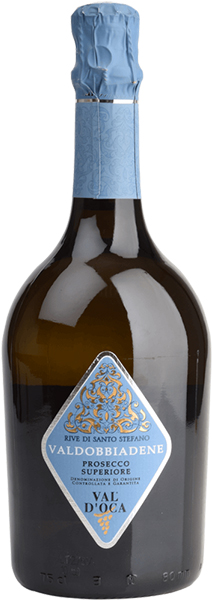
Cava
Cava is a Spanish sparkling wine that, like Champagne, is produced using the traditional method of secondary fermentation in the bottle.
It's primarily made from Macabeo, Xarel-lo, and Parellada grapes. Cava tends to have a more citrusy and nutty flavor profile compared to the richer flavors of Champagne.

Sekt
Sekt is a German sparkling wine that can be made using various methods, but the highest quality Sekt is made using the traditional method like Champagne.
It's often made from Riesling grapes, giving it a fruity and aromatic profile. Sekt is generally lighter and has a more delicate effervescence compared to Champagne.
Crémant
Crémant is a French sparkling wine made using the traditional method, but it's produced outside the Champagne region. Crémant can be made from various grape varieties depending on the region (e.g., Crémant d'Alsace, Crémant de Bourgogne).
It's often seen as a more affordable alternative to Champagne, with a diverse range of flavor profiles.

American Sparkling Wine
American sparkling wines are produced in various styles. The highest quality American sparkling wines, especially those from California, are made using the traditional method and often use the same grape varieties as Champagne (Chardonnay, Pinot Noir, Pinot Meunier).
They tend to have a fruitier and more robust flavor compared to the elegance of Champagne (due to the warmer climate).
Asti DOCG
Asti is an Italian sparkling wine made from Moscato grapes in the Piedmont region. It's known for its sweet flavors of peach and apricot.
Asti is produced using the Charmat method, like Prosecco, but it's much sweeter and has a lower alcohol content compared to Champagne.

The Champagne Classification System
In the world of bubbly, not all that fizzes is Champagne. The name "Champagne" is reserved for sparkling wines that hail from the Champagne region of France, and this is not just a matter of pride, but a legal classification.
The Champagne classification system is governed by the Appellation d'Origine Contrôlée (AOC), which sets stringent rules for winemakers.
First and foremost, to be labeled as Champagne, the wine must be produced in the Champagne region using traditional méthode champenoise.
The grapes must be sourced from specific vineyards classified by the AOC, and only three grape varieties are permitted: Chardonnay, Pinot Noir, and Pinot Meunier.
Furthermore, the fermentation process is meticulously regulated. Secondary fermentation must occur in the bottle, which creates the signature bubbles.
The wine must also age in the bottle for a minimum of 15 months for non-vintage Champagne and 3 years for vintage Champagne.
In essence, the Champagne classification system is a guarantee of quality and authenticity. When you sip Champagne, you are not just enjoying a sparkling wine; you are partaking in a rich tradition and heritage that has been meticulously crafted through centuries.
Keen to learn more? I go into detail on the key differences between sparkling wine and Champagne in the following section.
Related: How should you store sparkling wines like Champagne after opening?
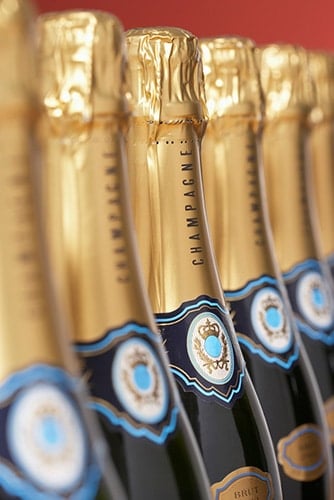
How Champagne is Different From Wine
I briefly discussed the distinctions made with the Champagne classification system but there are other ways Champagne is different from sparkling wines.
Let's take a deep dive into the distinctions you should be looking out for.
Winemaking Region
The first critical distinction between Champagne and any other type of wine is the region where it was produced.
Champagne wine must be produced within the Champagne region of France. Located 90 miles east of Paris, the wine production area was defined by legislation way back in 1927 and covers an area of 34,300 hectares. Within this area, there are 319 villages, which in the business, are called "crus".
So, simply put, a bottle of wine isn't allowed to be called Champagne if it is made anywhere else. But why is the area so important?
It's basically the sum of the microclimate, soil, and the local topography. All of the things that affect how grapes grow and their final flavor when harvested. In the wine world, we call this terroir and it gives a grape and therefore a wine, a sense of place.
Grow the same grape elsewhere and it tastes different. Champagne grapes (more on those in the next section) grown in the Champagne region have a distinct character imparted to them by the terroir.
But, I'm there's more to it than that! Let's find out what else makes Champagne unique compared to other wines.
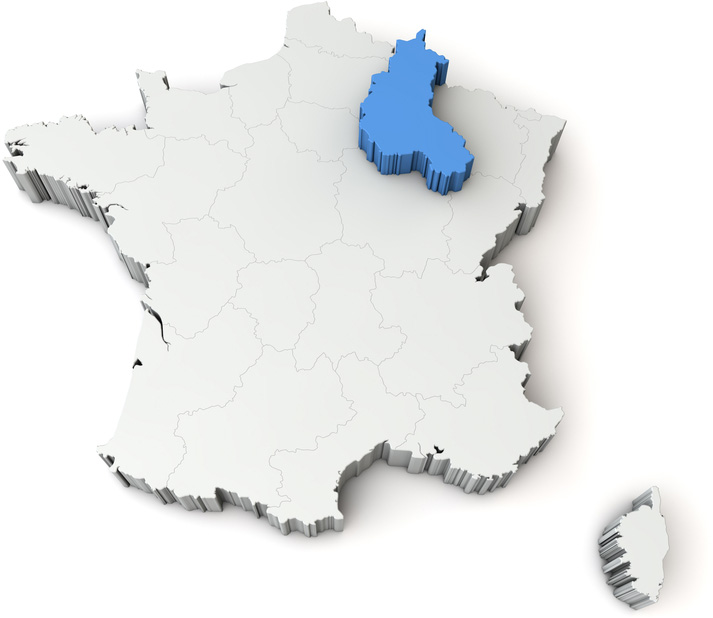
Map of France Highlighting Champagne Region
Grape Types
When it comes to Champagne vs sparkling wine, the choice of grapes is not just a matter of taste, but a tradition steeped in history.
The unique character of Champagne is largely attributed to the trio of grapes that are predominantly used in its production.
Chardonnay
Chardonnay is the only white grape among the trio and is known for its elegance and finesse. It brings freshness, delicacy, and floral notes to Champagne.
Blanc de Blancs Champagnes are made exclusively from Chardonnay and are celebrated for their crisp acidity and vibrant character.
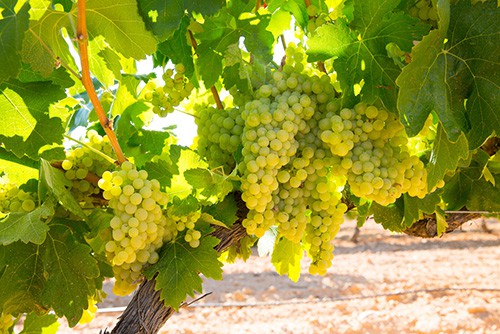
Pinot Noir
Pinot Noir, a red grape, is the backbone of many Champagnes. It lends structure, complexity, and a certain depth to the blend.
The flavors contributed by Pinot Noir are often reminiscent of red fruits like strawberries and cherries. It also imparts body, making the Champagne richer and more robust.
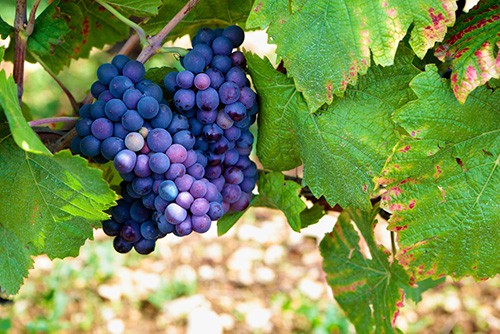
Pinot Meunier
Often considered the unsung hero, Pinot Meunier is another red grape that plays a vital role in Champagne production. It adds fruitiness and aromatic charm to the blend.
Pinot Meunier is known for its approachability and tends to mature faster than Pinot Noir, making it essential for non-vintage Champagnes.
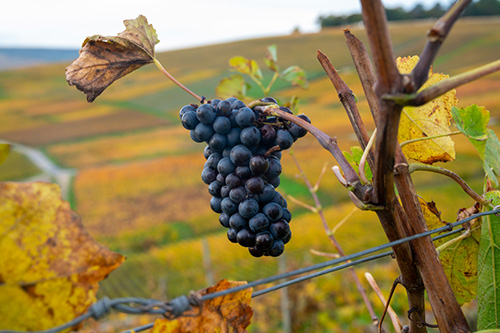
While these three grapes are the stars of Champagne, there are also lesser-known grapes permitted by the AOC, including Arbane, Petit Meslier, Pinot Blanc, and Pinot Gris. However, these are rarely used.
In contrast, other sparkling wines around the world may use a different set of grapes. For example, Prosecco is made primarily from the Glera grape, and Cava often uses Macabeo, Xarel-lo, and Parellada.
Chardonnay, Pinot Noir, and Pinot Meunier could (and can) of course be used to make up any kind of wine.
There are great sparkling Chardonnay wines from Australia for example but that's just one of the boxes that need to be ticked in order to be labelled Champagne.
Grape Growing
The viticultural practices in the Champagne region are governed by strict regulations to ensure the quality of the grapes.
These rules are defined by Comité Interprofessionnel du vin de Champagne (CIVC) and the Appellation d'Origine Contrôlée (AOC).
- Vineyard Yields: The maximum permitted yield of grapes per hectare is set annually by the CIVC (Comité Interprofessionnel du vin de Champagne). This yield is determined based on market demand and weather conditions. For example, in recent years, the yield has been set at around 10,000 to 11,000 kilograms per hectare.
- Planting Density: The minimum planting density in Champagne is 8,000 vines per hectare. This high density is believed to create competition among the vines, forcing the roots to go deeper into the soil, which is thought to improve the quality of the grapes.
- Pruning: Pruning is essential to control the vigor of the vines and the size of the harvest. In Champagne, the most common pruning methods are Chablis and Cordon de Royat. These methods involve cutting back the canes to leave a certain number of buds that will produce the next harvest. The number of buds left after pruning is also regulated.
- Trellising and Training: The vines must be trellised and trained in a way that ensures good exposure to sunlight and air circulation. This helps to reduce the risk of diseases.
- Harvesting: The grapes must have a certain level of ripeness before they can be harvested. The CIVC sets the minimum required sugar levels for the grapes. Additionally, the grapes must be hand-harvested to ensure they are not damaged.
- Sustainable Viticulture: Champagne producers are encouraged to practice sustainable viticulture. This includes reducing the use of pesticides, managing water resources efficiently, and maintaining biodiversity in the vineyards.
- Chalky Soil Requirement: The vineyards in Champagne are typically planted on chalky soils, which are believed to contribute to the unique character of Champagne wines. This is not a regulation per se, but it is a characteristic of the terroir in the Champagne region.
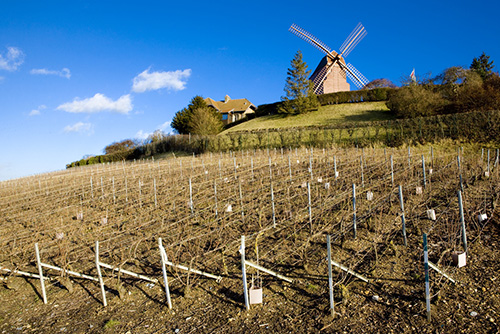
Wine Production
So, a sparkling wine made in the Champagne region with Chardonnay, Pinot Noir, and Pinot Meunier is called Champagne then, right?
Actually, there's a lot more to it and a lot of the rules define the winemaking production. In this section, you'll learn about Méthode Champenoise, otherwise known as Méthode Traditionelle (or the traditional method).
Champagne and other sparkling wines share some similarities in production, but it's the subtle differences in winemaking techniques that set Champagne apart.
The Traditional Method (Méthode Champenoise)
Champagne is produced using the Traditional Method, also known as Méthode Champenoise. This involves a secondary fermentation in the bottle, which creates the bubbles.
After the initial fermentation, a mixture of sugar and yeast, called the liqueur de tirage, is added to the wine before it is bottled and sealed.
The wine undergoes a second fermentation, and as the yeast consumes the sugar, it produces alcohol and carbon dioxide, creating bubbles.
Aging on the Lees
A crucial aspect of Champagne production is aging on the lees (dead yeast cells). This process imparts complexity and richness to the wine.
In Champagne, the wine must be aged on the lees for at least 15 months for non-vintage and 36 months for vintage Champagne.
Riddling and Disgorgement
Riddling involves gradually turning the bottle to collect the lees in the neck. Once the sediment is consolidated, the neck is frozen, and the plug of sediment is removed in a process called disgorgement.
Dosage
After disgorgement, a small amount of sugar syrup, known as the dosage, is added to the wine to balance acidity and contribute to the style (from Brut Nature to Doux).
Other Sparkling Wine Production Methods vs Champagne
In contrast, other sparkling wines may use different methods. For example, the Charmat Method, used for Prosecco, involves conducting the second fermentation in large tanks rather than in individual bottles.
This method is quicker and less labor-intensive but generally produces wines with lighter, fruitier profiles.
Cava, from Spain, is produced using a method similar to Champagne but typically uses different grape varieties and has different aging requirements.
Sweetness Scale
The sweetness scale of Champagne wine is determined by the amount of residual sugar present in the wine. This is measured in grams per liter (g/L).
The sweetness levels are categorized into several official terms, which are usually indicated on the Champagne label. These categories are used by other types of sparkling wines too.
The sweetness in Champagne is achieved by adding a dosage, which is a mixture of sugar and wine, after the second fermentation and just before the bottle is sealed.
There's a rather large distinction to be made with Champagne vs wine when we're talking about still wine or table wine.
A 'dry' Champagne (sec) may contain up to 32 g/L of sugar. Now that's quite a lot, especially when you consider a dry red wine might have something like 6 g/L.
So, be careful and don't fall into the trap that many do! Dry sparkling wines is not actually dry!
Price
There is usually a big difference between wine and Champagne when it comes to price. It's hard to mistakenly buy Champagne because it's usually very expensive.
Let's compare the factors that make Champagne expensive to those of other wines:
- Region and Appellation: While Champagne has a protected designation of origin, other wines may not have such strict regional classifications. For example, Prosecco can be produced in a larger area in Italy, and Cava in Spain. This allows for higher production volumes and often lower prices.
- Production Costs: The traditional method used in Champagne is more labor-intensive compared to the tank method used for Prosecco or the charmat method for some New World sparkling wines. These alternative methods are more cost-effective, resulting in lower prices for consumers.
- Aging: While Champagne is often aged for several years, other sparkling wines like Prosecco and Cava may have shorter aging periods. This reduces costs and allows for quicker turnover.
- Land Costs: The cost of vineyard land in regions producing other wines is often lower than in Champagne. For example, land in the Prosecco region of Italy or the regions producing American sparkling wine is generally less expensive.
- Quality of Grapes: While Champagne has strict regulations regarding grape quality, other regions may have more lenient rules. This can result in higher yields and lower costs, though it may also affect the quality of the wine.
- Marketing and Branding: Champagne has a luxurious image, while other sparkling wines may not carry the same prestige. Brands like Prosecco and Cava are often marketed as more accessible and everyday options.
- Export and Distribution: Champagne is a global brand, and its export and distribution costs are high. Other wines, especially those consumed more locally or regionally, may have lower distribution costs.
- Sweetness and Flavor Profile: Champagne is known for its complexity and depth of flavors, often with a more yeasty and toasty profile due to the aging process. Other sparkling wines like Prosecco tend to be fruitier and lighter.
Hallmarks of Great Sparkling Wine
Other sparkling wines are often overlooked in favor of the brand recognition that Champagne has.
The truth is, sparkling wines from other regions can be just as good and cost a lot less!
But, how do you recognize good sparkling wine?
Here are some tips for reading bottle labels and tasting wines.
